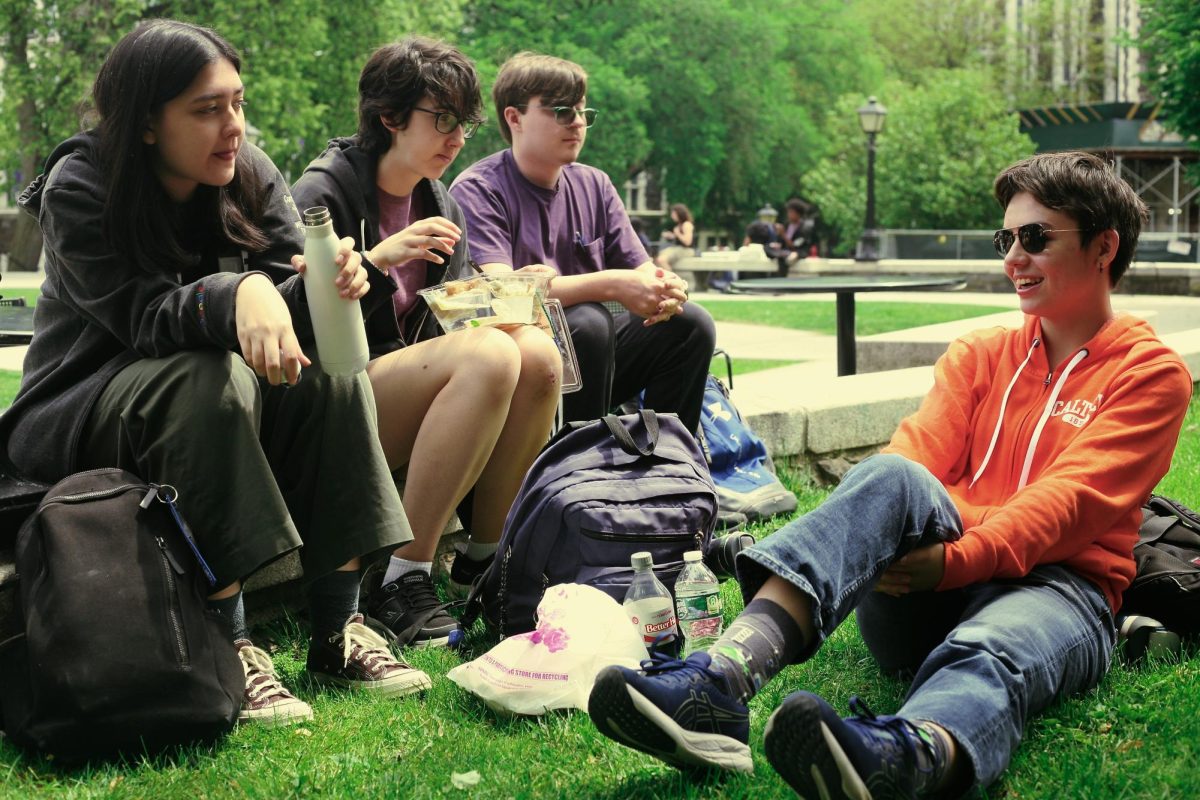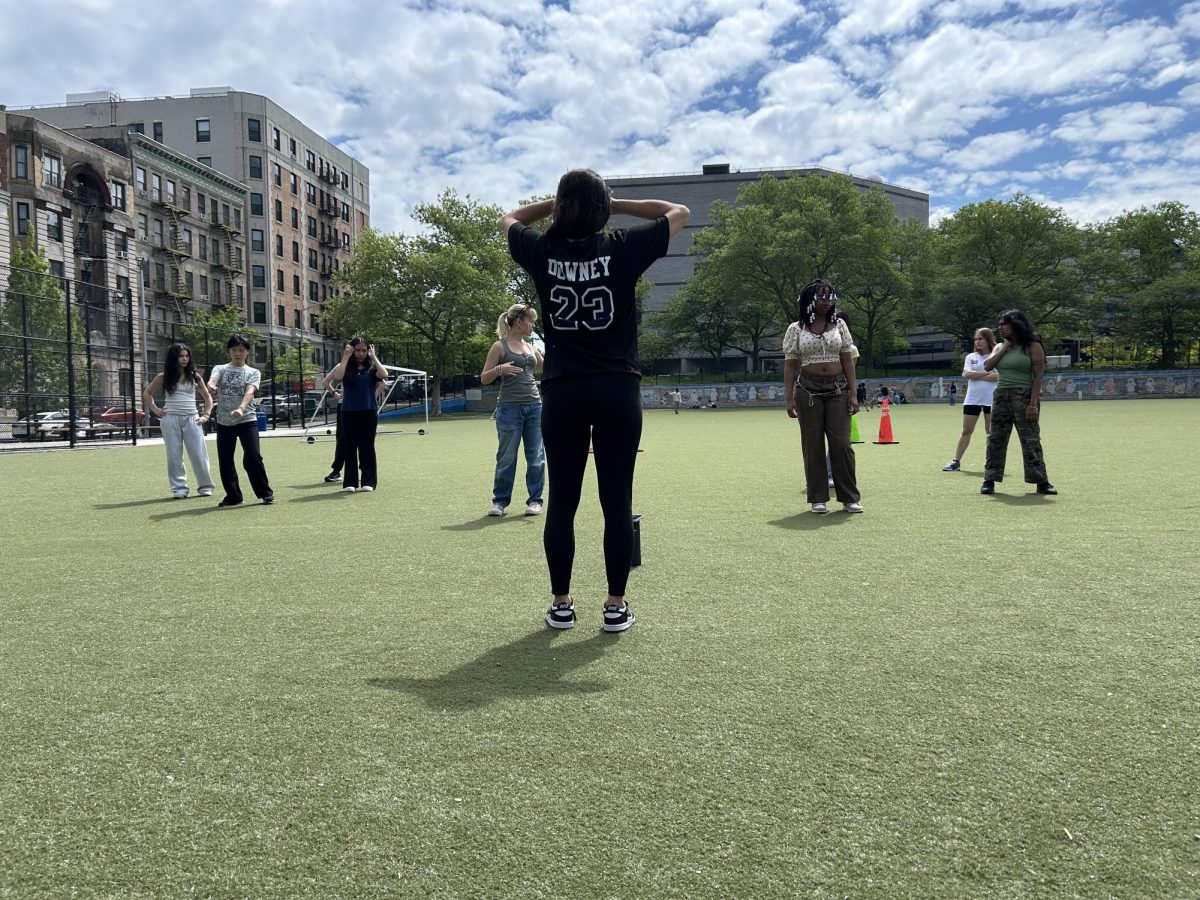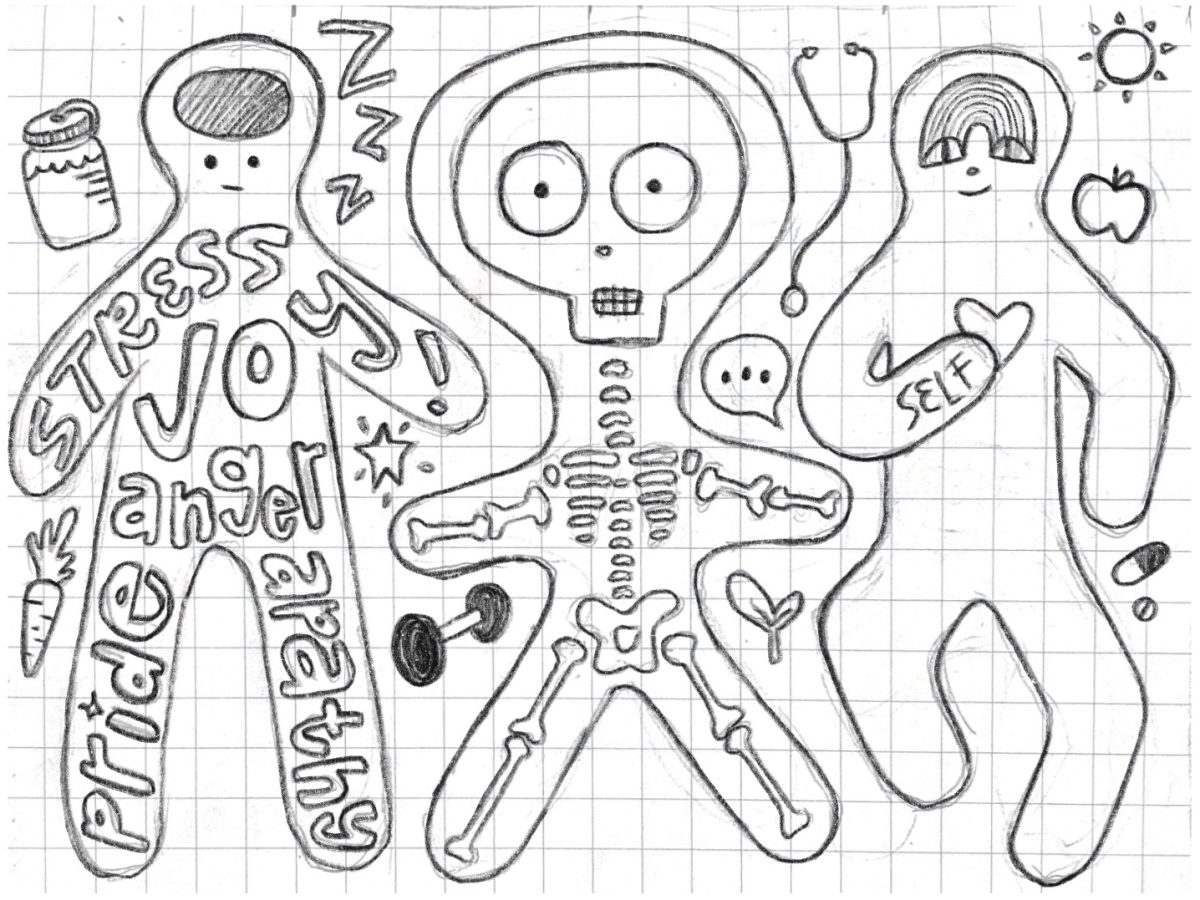
Commonly called a cult, the HSMSE Flying Dragons include about a third of the school’s students, although only about half are actually on the team at any given point. To the Flying Dragons, track makes sense, but to the remaining two-thirds of the school, the team remains a bit of a mystery. What do they do, how do they train, and why do they spend so much time doing it? Well, I can’t answer the last question, but the first two are relatively straightforward.
Each school year is split into three seasons: fall, winter, and spring. Cross country occurs during the fall, indoor track in the winter, and outdoor track in the spring. Generally, the indoor and outdoor track teams have most of the same people on them, though some have other obligations. Athletes on the track teams are chosen by their skill sets and potential, which is determined by running and jumping tests. A lot of students on the cross country team—typically freshmen—find themselves rejected from the indoor track team because their skill sets are best suited for cross country (I too was one of those unlucky freshmen).
So what events does the team actually do, and how do those events vary from season to season? Keep reading to see a brief explanation of each season and event.
Cross country events
Most of the time, this team runs its races at Van Cortlandt Park in the Bronx, a world-renowned course with a history of many famous individuals, athletes and non-athletes alike, competing there, though the team occasionally does a meet in a different location. Due to different course terrains and elevations, an athlete’s times are not comparable across locations. Van Cortlandt Park, for instance, is not a very fast course due to its endless hills throughout the 5K.
Races are typically split into freshmen races, sophomore races, junior varsity races and varsity races (varsity races are predetermined to be the fastest seven athletes on a given day, everyone else races junior varsity), these are grouped by gender, though it depends on the size and importance of the meet. There are two main distances for athletes to run, though some races will have a third exclusively for sophomores.
- 1.5 miles (freshmen): Freshmen boys and girls run 1.5 mile races for most of the season.
- 2.5 miles/4K (sophomores): Only some bigger races have this distance, but sophomore athletes sometimes run this instead of the typical 5k.
- 5K/3.1 miles (varsity/junior varsity): Sophomore, junior, and senior runners run 5 kilometer races through the “back hills,” which is almost entirely composed of steep, endless slopes and turns for over a mile.
The first five finishers of each event are scored—their placement determines the number of points they get—and the team with the fewest points wins. Junior varsity and freshman races are also scored like this, but generally the varsity race is the most competitive.
Indoor track events
Indoor track is completely different from cross country. While distance runners often compete in both, track is a much more diverse set of events, and it is up to the athlete to decide which events they compete in.
- 55-meter dash: This is not actually done on the track itself, but instead on a strip covering much of the interior of the track. This is the shortest distance run in track and field, and the winner is typically the person with the fastest acceleration, as it takes most athletes about this distance to reach their top speeds.
- 55-meter high hurdles: This is the same distance, but the athletes are supposed to jump over hurdles spaced 9.14 meters apart. Jumping is not required but it is much faster than trying to go through the hurdle, as staying in lane is required.
- 300-, 600-, and 1000-meter run: The term “middle distance running” is not very strictly defined, but usually 600 meters is considered the shortest middle distance event in indoor track. 300 meters is considered a sprint.
- 4×200-meter relay: Four athletes from the same team run with a baton, each one handing it to the next person until all four have completed the race.
- Distance medley relay (DMR): Though seldom run in high school, this is a fun relay. All four members run different distances. The order of distances is 1200, 400, 800, 1600.
Indoor and outdoor track events
- 1500/1600-meter run: This event is often called “the mile”, even though a mile is 1609 meters. The track does have a designated starting location for a mile, though usually boys run 1600 meters and girls run 1500.
- 3000/3200-meter run: This is considered a long distance event, as it is almost two miles. Similar to the 1500/1600, boys run 3200 meters and girls run 3000 meters.
- 1500-meter race walk: This is currently only a girls’ event in the PSAL. To differentiate walking from running, at least one leg must be. In addition, the knee is not supposed to be bent while the foot is touching the ground, and it is to the judgment of the officials that these rules are met.
- Shot put: A dense, heavy ball is thrown from behind a line, with the objective of throwing it as far as possible.
- Pole vault: Often considered one of the most entertaining events in track and field, an athlete has to use a pole to clear a bar of a set height. They do a run-up holding the pole, plant it in the ground, and lift themselves up in an attempt to clear the bar. If the bar is hit but does not fall, it is considered cleared.
- High jump: Similar to pole vault, an athlete must run up to and jump over a bar without it falling. The most efficient way to jump is to run up while turning and jump backwards over the bar.
- Long jump: A jumper has to run up to accelerate into a jump and land in a sandpit. The objective is to jump as far as possible.
- Triple jump: The run up is the same as in the Long Jump, except when an athlete crosses a line they do a hop (landing on the same foot twice), a skip (landing on the opposite foot), and a jump into the sandpit. A good triple jump distance is approximately double the length of a good Long Jump distance.
- 4×400- and 4×800-meter relays: Just like the 4×200, each member runs the distance in succession, giving the baton to the next person. The first team to finish wins.
Outdoor Track Events
- 100-, 200-, 400-, and 800-meter runs: Instead of the corresponding indoor track distances, outdoor tracks use these. The outdoor track is 400 meters in length, instead of 200 meters for indoor track, so the distances are altered to make more sense.
- 100/110-meter high hurdles: Boys run 100 meters, girls run 110. The hurdles here are spaced about 13-14 meters apart from each other.
- 2000/3000-meter steeplechase: This is a unique event. It’s similar to Hurdles, except with a much longer distance. The “hurdle” is much shorter and it can be stepped on in Steeplechase. Some races involve a pool of water behind a steeple, so racers must jump as far forward as possible to avoid being slowed down.
- Discus: This is similar to shot put, except the object is shaped like a disk, lighter and flatter.
- Javelin: Javelin is another weight throw event, except a long pointy stick is being thrown across the interior of a track. Aerodynamics are important in throwing a javelin because of its shape and the distance it is being thrown.
- Pentathlon: This is a competition for total points scored across five different events: 100/110m hurdles, a mid-distance run, long jump, high jump, and shot put.
Different Flying Dragons participate in any number of these events throughout the cross country and track seasons, and though they often compete in multiple, many require completely different skill sets. Track and field involves sprinting, jumping, distance running, weight throwing, and sometimes a combination, and an athlete who finds themselves struggling in a certain event may find themselves successful in another. Athletes, whether they’re world-famous or high schoolers, are constantly motivated to see their training result in improvement and success. As Jesse Owens, one of the greatest track and field athletes of all time, said, “The battles that count aren’t the ones for gold medals. The struggles within yourself — the invisible, inevitable battles inside all of us — that’s where it’s at.”




















